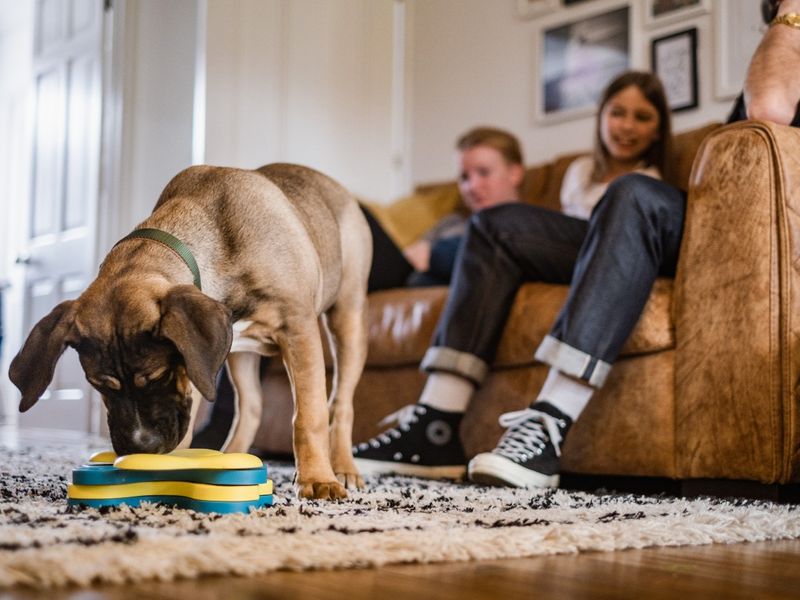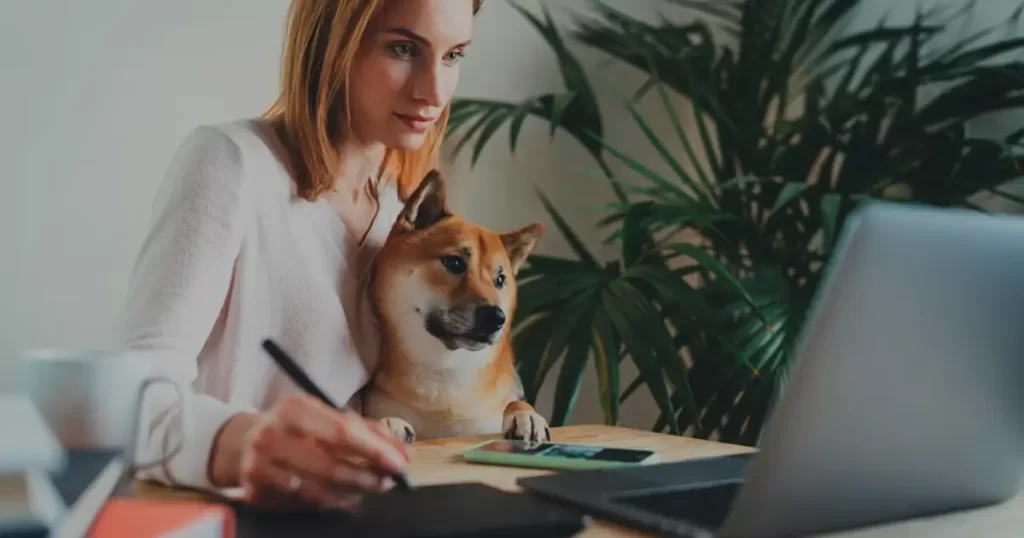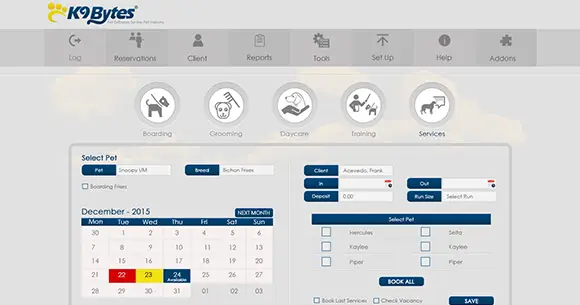When your dog starts exhibiting angry behavior, such as growling, snapping, or biting, it can be truly alarming. Most dog owners have no clue what to do. Some yell at their aggressive dogs. Some pretend nothing’s wrong. Others cross their fingers and hope the problem will disappear. Guess what? None of that works.
Here’s the deal: Helping an aggressive dog isn’t rocket science, but you need to know what you’re doing. This guide breaks down the 10 biggest mistakes people make with their aggressive dogs. Once you know what NOT to do, you are already halfway to fixing the problem. So let’s get started.
What Are Aggressive Dogs?
Look, an aggressive dog is not a monster. It is simply a dog that acts aggressively or threateningly toward people or other pets. Maybe your dog growls when someone walks by. Maybe he snaps at the mailman. Or perhaps she goes crazy when another dog comes near.
Here’s what most people don’t understand: dogs act aggressively for a reason. They are scared. They’re protecting something. They hurt somewhere. They never learned proper manners as puppies. Your dog is not trying to be difficult on purpose.
Aggression looks different for every dog. Some dogs just give you a low growl. Others bark like crazy and pull on the leash. The worst cases? That is when dogs actually bite. However, here is the good news: most aggressive dogs can be changed. They need patience. They need proper training. And yeah, sometimes they need professional help. But they’re not hopeless cases.
10 Common Mistakes That Make Dog Aggression Worse

Alright, now we are getting to the meat of it. You love your dog. You want to help. However, sometimes trying to address aggression without the correct information backfires big time. I have seen owners accidentally train their dogs to be MORE aggressive while thinking they’re doing the right thing. Crazy, right?
These 10 mistakes recur frequently. You may be making one of them right now without even knowing it. The good news? Once you know what they are, avoiding them is easy. Let’s go through each one so you can stop making your dog’s problems worse and actually start making progress.
1. Ignoring Early Warning Signs of Aggression

Dogs’ aggression doesn’t come suddenly. It usually begins with small indications, such as a growling tooth that hasn’t been brushed or a stiff, rigid body. Many dog owners ignore the early warning signs and assume that their dog is having an unlucky day. By ignoring these warning signs, you can allow the dog’s aggression to increase. Recognizing and responding to these warning signs is crucial before they become more serious. If you can identify the issue early, you will be able to avoid an even more hazardous situation from occurring in the future.
2. Using Punishment as the First Solution

Many owners believe that reprimanding their dogs will end aggression. They might shout at or hit their dogs, or employ aggressive training methods. However, it is not uncommon for Punishment to increase aggression. Instead of helping your dog understand what behavior you wish to encourage, Punishment can cause fear and anxiety. Positive reinforcement works much better. Rewarding your dog whenever they behave calmly will teach them how to act, rather than putting them in a position where they are likely to be punished for doing things they shouldn’t do.
3. Not Socializing the Dog Properly

One of the leading causes of aggression in dogs is a lack of socialization. If a dog isn’t exposed to enough interaction with new animals, people, and surroundings, it could create fear-based aggression. If a dog isn’t taught to be a good friend, it may feel scared in unfamiliar situations and react violently. Engaging a dog in social settings early will help it become more at ease with people and other dogs, decreasing the likelihood of aggression later in life.
4. Overlooking Medical or Health Issues

Sometimes, dog aggression isn’t due to behavior but an illness or pain. Conditions like arthritis, ear infections, or toothache can cause dogs to get violent or snap. If your dog suddenly becomes aggressive, a visit to the vet is necessary. The pain can even cause the calmest dog to behave erratically. Regular checkups can identify medical issues early, allowing you to address them before they develop into more severe conditions.
5. Not Seeking Professional Help
Managing an aggressive dog can be challenging, especially when the behavior is severe. Many dog owners attempt to resolve the issue, often leading to frustration and errors. Consulting a professional is crucial if you are unsure how to manage aggression. A behaviorist or dog trainer can help you deal with the issue. They can help you determine the root of the behavior and offer a plan tailored to your dog’s specific needs.
6. Not Setting Clear Boundaries or Consistent Rules
Dogs thrive on regularity. If the dog’s owner is inconsistent in setting boundaries or enforcing regulations, the pet will likely become confused and angry. It may lead to an increase in aggression. For instance, when the dog is allowed to play on furniture one day only to be scolded for it the next day, they may not be aware of what’s acceptable. Establishing and adhering to clear rules is crucial so the dog understands what is required.
7. Inadequate Exercise and Mental Stimulation
Dogs that don’t receive enough stimulation or exercise can become easily bored, leading to frustration and even aggression. In the absence of regular exercise, high-energy dogs are more likely to exhibit aggressive behavior. Dogs need regular exercise, walks, and other activities that help eliminate excess energy. If your dog doesn’t receive enough mental stimulation, they may resort to violent behavior to cope with boredom. A mix of exercise and cognitive challenges can keep the aggression at bay.
8. Affecting fear or anxiety
It is normal to be scared when you encounter an aggressive dog. However, a fearful reaction can exacerbate the situation. Animals can be sensitive to their owners’ moods. They can detect this and become more aggressive if you are nervous or scared. It is essential to remain calm and secure when interacting with your pet. If you behave with fear, your dog can sense it and respond similarly. Make sure to stay quiet. If you feel uneasy, take a step back and get advice from an expert.
9. Not Using Proper Equipment or Leashes

Using improper equipment can make handling an aggressive dog even more difficult. You may be at risk if you use an ordinary collar or leash that offers insufficient control. It is essential to use the appropriate equipment, such as a harness or head collar, so that you remain in control of your dog. Sometimes, a muzzle may be necessary when introducing your dog to other people or animals. If you are considering Boarding Aggressive Dogs, ensure the facility has the right equipment to handle the dogs’ behavior safely.
10. Underestimating the Severity of Aggressive Behavior
Some dog owners are unaware of the severity of their dog’s aggression. They can dismiss their dog’s rage or yell to the side as “normal” or “just a phase.” But these are alarm indicators that shouldn’t be overlooked. Afflicted behavior can rapidly escalate and become dangerous if not addressed. It is essential to take the aggressive behavior seriously. If your dog exhibits any signs of aggression, address it immediately. The longer you delay, the more difficult it will be to control.
How to Identify Aggressive Behavior in Dogs

Dogs don’t hide their feelings very well. Before a bite, the dog has been giving you signals for days, weeks, or even months. The problem is, most owners miss these clues completely. Let me show you what to look for.
Watch Your Dog’s Body:
- Gets super stiff and freezes in place
- Hair puffs up on the back and neck
- Tail goes up high and rigid (this isn’t happy wagging)
- Ears fold back tightly against the head
- Lips curl back, showing teeth
- Stares hard at someone without blinking
- Eyes get wide so you can see the white parts
Listen for These Sounds:
- Any kind of growl, even quiet ones
- Deep rumbling noises from the throat
- Sharp, aggressive barking
- Air snapping near your hand or face
Know the Trigger Moments:
- Mealtime (don’t go near that food bowl!)
- Doorbell rings and strangers show up.
- Other dogs at the park or on walks
- Trying to grab their favorite toy
- Bath time or cutting nails
- Touching certain body parts that hurt
Don’t brush off these signs. That tiny growl today can turn into a serious bite next month. Catch it early, deal with it now, and you will save yourself a world of trouble later.
What Should You Do Right Now If Your Dog Is Aggressive?
Your dog has aggression problems. You have read about what NOT to do. Now what? Here’s your actual game plan.
Stop putting your dog in bad situations. The dog goes crazy at the park? Do not go there yet. Hates visitors? Put him in another room. You are buying time to work on the real problem. Grab a notebook, too. Write down when your dog snaps. What triggered it? Who was nearby? You will see patterns emerge quickly.
Take your dog to the vet next. Pain makes dogs bite. An ear infection or sore tooth could be the whole problem. Rule that out first. Then call a pro. Not your buddy who watches dog shows. A real trainer who handles aggression. This stuff’s serious. You need expert help. Follow their plan. Stay patient. Your dog won’t change overnight.
Conclusion
Managing an aggressive dog can be challenging, but avoiding these simple mistakes can help you cope more effectively. Keep your dog calm, consistent, and patient. Avoid retribution and seek guidance from a professional whenever necessary. Take care of your dog’s health and tackle behavioral issues immediately. Taking the proper steps can create a more secure and favorable environment for you and your pet. If your dog’s aggression is overwhelming, don’t hesitate to seek help from a professional to ensure the most positive outcome for all parties involved.
FAQs
Q: Do aggressive dogs get worse with age?
A: Yes, aggression can worsen without proper training or intervention as the dog becomes more confident in its behavior. Early and consistent training is key.
Q: Can aggressive dogs be trained successfully?
A: Yes, with patience, consistency, and the right approach, many aggressive dogs can learn better behaviors and become more manageable.
Q: Is it safe to groom an aggressive dog at home?
A: Grooming an aggressive dog can be risky without experience. For optimal results, refer to our guide on pet grooming for aggressive dogs.
Q: Should I use a muzzle on my aggressive dog during walks?
A: A muzzle can be a helpful safety tool when used correctly. It should never be a punishment, but rather a precaution, during training or public outings.
Q: How do I know if my dog’s aggression is fear-based or dominance-based?
A: Fear-based aggression is reactive and occurs when a dog feels threatened. Dominance-based aggression is more assertive. A trainer or a veterinary behaviorist can help diagnose the cause.




